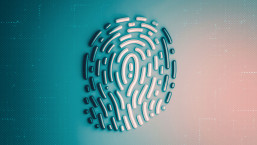The United States' Federal Reserve has published advice for financial institutions located in the US on how to mitigate risks of synthetic identity payments fraud. Citing an analysis by the Auriemma Group, the Fed noted that synthetic identity fraud cost US lenders around US$6 billion and was responsible for 20% of credit losses in 2016.
Scammers usually create synthetic identities by piecing together bits and pieces of real and fake information, which includes Personally Identifiable Information (PII), such as names, Social Security Numbers (SSN), and addresses. They frequently target individuals who are less likely to check their credit information often, such as children, the elderly, or even homeless people. The upside of utilizing this method for fraudsters is that synthetic identities act like legitimate accounts, which means they evade conventional means of fraud detection.
“This affords perpetrators the time to cultivate these identities, build positive credit histories, and increase their borrowing or spending power before ‘busting out’ – the process of maxing out a line of credit with no intention to repay,” warns the Federal Reserve.
The guidance, entitled “Mitigating Synthetic Identity Fraud in the U.S. Payment System”, is the third publication in a series of white papers dedicated to synthetic payments fraud; the previous two instalments were published last year and focused on defining and identifying this type of fraud.
In its newest whitepaper, the Fed points out that institutions shouldn’t rely on only one screening method to combat what a recent McKinsey report called “the fastest-growing type of financial crime” in the US. Instead, implementing a multi-layered approach that weds manual and technological data analysis places organizations in an optimal position to identify and mitigate cases of synthetic identity-related fraud.
RELATED READING: Simple steps to protect yourself against identity theft
While looking at the basic PII, such as SSNs, names, dates of births and addresses, is a good starting point, experts say that broadening the scope to include additional data sources affords institutions the best chance of success in identifying fraudsters. Looking for common denominators, such as multiple users using the same SSN or checking for multiple accounts that were created from the same IP address, could help in identifying more cases.
It is important to point out that there is no pixie dust that’ll make synthetic identity payment fraud disappear; there are many hurdles to overcome ranging from regulations on the state level to fraudsters switching up tactics. However, specialists think that a holistic approach consisting of a consistent definition of synthetic identity fraud, technological innovation, data solutions, and cooperation between the private and government sector could be the best way to mitigate this type of fraud in an effective manner.




